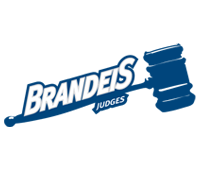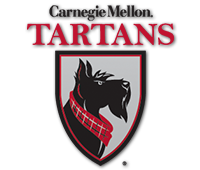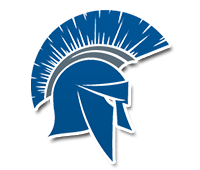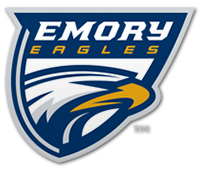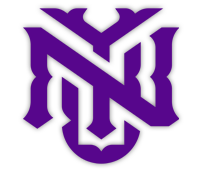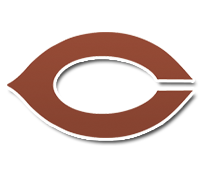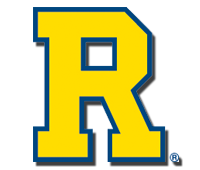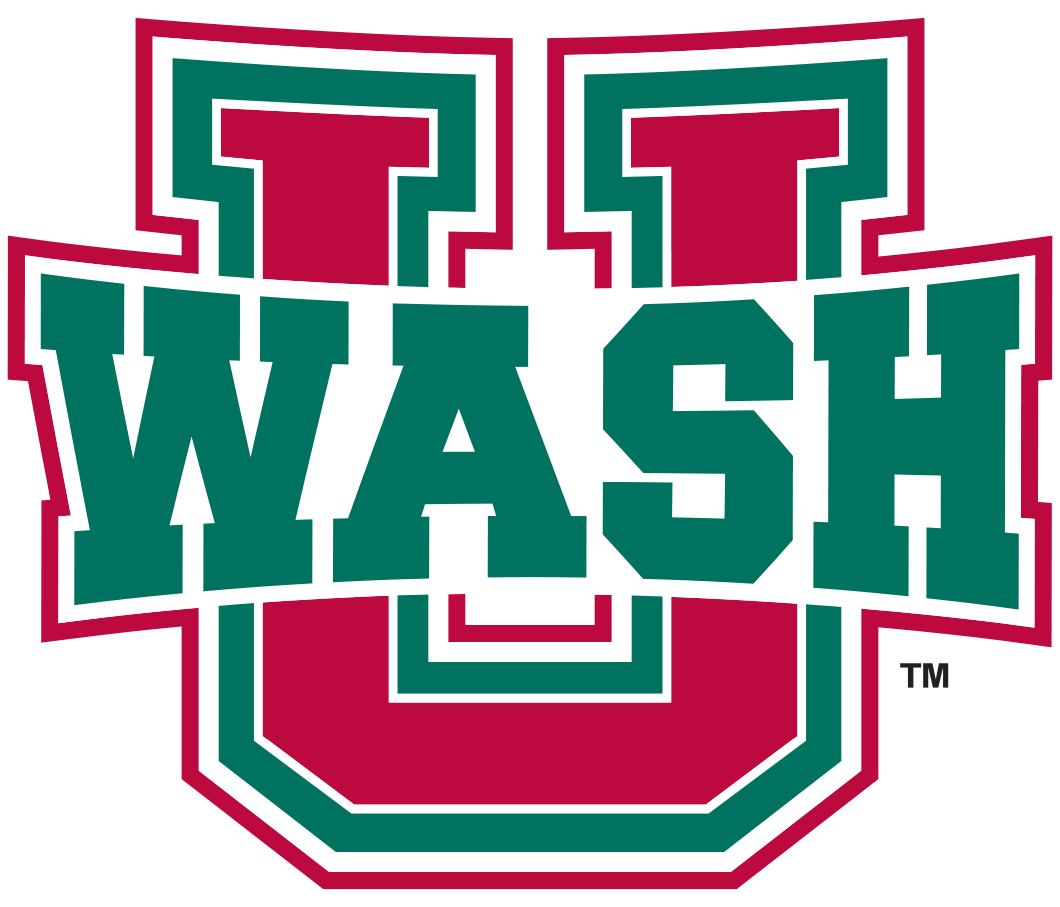
Washington University hosted the 2023 UAA Student-Athlete Advisory Committee (SAAC) on Saturday and Sunday, Aug. 5 and 6 in St. Louis.
You Can Play
Saturday's workshop was facilitated by "You Can Play" Chief Operations Officer Kurt Weaver, who spoke about inclusion in multiple ways, particularly as it relates to LGBTQ+ stuident-athletes and issues. You Can Play is an organization that works to ensure the safety and inclusion for all who participate in sports, including LGBTQ+ athletes, coaches, and fans by creating a community of allies that is able to foster a true sense of belonging.
"Spending the day with UAA student-athletes and advisors was a special experience for ‘You Can Play.’ The athletes showed why they are successful in their sports, approaching the work of inclusion with focus and engaged minds," Weaver remarked. "The discussion and ideas that flowed from the day will launch these programs and athletes into the next phase of their sport and careers and we feel confident these future leaders will forge a new path of inclusion in their sports and communities across the country."
 Kurt Weaver discussing strategy with Brandeis and NYU student-athletes
Kurt Weaver discussing strategy with Brandeis and NYU student-athletes
The workshop featured scenarios that have happened, and continue to happen, in athletics at every level. “One benefit that I took away from Saturday stemmed from the role play we did during the "You Can Play" workshop. Kurt gave us a myriad of scenarios that may arise on a team, and we discussed with other school representatives how they would handle the situation, and then we discussed it as a group with Kurt," described WashU SAAC co-president and women's golfer Caraline Oakley. "As a rising senior on my team, I found this to be extremely helpful to get live experience on how to have hard conversations and handle these types of situations."
After the workshop, each school's representatives strategized on what they wanted their messaging about inclusion to be. Each school made a video with their take on "You Can Play in the UAA." The concept was initially brought forward by WashU Director of Athletic Communications Bridget McCann, who served as producer, director, and videographer.
"The 'You Can Play' campaign aligns perfectly with the UAA's 'Strive Together' message of inclusivity. In the UAA, we are committed to providing a welcoming and accepting environment no matter what your background or identity and these videos serve as another step in the DEI work that the UAA has already begun," McCann articulated. "It was a pleasure to work with the UAA's fantastic student-athletes to craft these messages. If you can play, you can play in the UAA!"
“The 2023 UAA SAAC Meeting served as a reminder to me of the incredible leaders and people that make up our conference, and the commitment we all share to continue improving the student-athlete experience within the UAA. During our session on Saturday, we acknowledged that change is created by consistently taking the small steps that are necessary," affirmed WashU SAAC co-president and men's basketball student-athlete Jabari Chiphe. I'm excited to see all the steps we take as individuals and as a conference to bring tangible change for the betterment of the UAA.”
Affinity Groups
After the videos on Saturday, affinity groups met with UAA Executive Director Dick Rasmussen and then by themselves. Attendees included leaders and members of the UAA Black/Student-Athlete of Color groups, including UAA Black Letterwinning Athlete Coalition (BLAC) co-presidents Charis Riebe of WashU and Geoff PointDuJour of Emory University.
“The SAAC meeting was a great opportunity to connect with leaders from other schools as we discussed issues most pertinent to the conference and our experiences as student athletes, specifically as student athletes of color," commented Riebe, who is a member of the Bears' women's track & field team. "It is important that each school ensures the leaders of their affinity groups are present at such conferences to ensure there is better representation of students and experiences. There is a lot of work to be done, but a great opportunity for all of us to ‘Strive Together,’ which is why it is crucial that these leaders are included in the conversations. As our speaker shared, ‘authenticity comes from consistency,’ and I am excited to watch the conference’s commitment to a diverse and inclusive environment grow, as their efforts also grow to match their promises.”


L: UAA BLAC leaders Gabe Haithcock, Raquel Williams, Charis Riebe, Elise Moore, Ivvy Hicks, Geoff PointDuJour; R: Affinity group meeeting
“The SAAC meeting provided an invaluable experience as I was able to collaborate with student-athletes and administration across the conference; however, there is more to be done. During the conference, we dove into the ‘Strive Together’ initiative. While it’s a promising idea promoting that you can play no matter who you are, I believe it also provides the opportunity to push for more actionable items and internal impact," stated PointDuJour, who co-founded the Eagles' Black Student-Athlete Group this past fall and is a member of the the Emory men's track & field squad. "It is through legislation and training that we can take the steps needed to bring about change, whereas logos and merchandise are more for branding purposes. I believe that if any conference is capable of achieving these goals, it’s the UAA. It is not a matter of if, but when.”
Sharing Ideas and Programs
After the group shared a meal and played games at Main Event in nearby Chesterfield on Saturday night, they reconvened Sunday morning for the business meeting facilitated by WashU SAAC co-chairs Oakley and Chiphe. It was also an opportunity to further discussions from the day before about SAAC and affinity groups' initiatives on each campus. Leaders were able to talk about events they ran and ask others for more information on programs they may want to bring back to their university.
"During the second day of the conference, we discussed the best ways to communicate with our given school’s SAAC representatives and to get messages out to the teams and the whole athletic department," Oakley explained. "We came to the agreement that one of the best ways to do so is through GroupMe and to have “point people” on each team, who send the messages out to their teams. We have used these procedures in WashU’s SAAC before and we will continue to do so after hearing that many people find this policy beneficial about events and other info."
“The weekend was great for getting to hear the unique initiatives happening on other UAA campuses, like Emory’s financial literacy event. It was also beneficial to experience the ‘You Can Play’ event, as conversations like that are very important for inclusivity across our campuses," said University of Chicago men's swimmer Garrett Clasen, who is the UAA representative on the NCAA Division III SAAC. "I am on the DE&I working group in national SAAC, so a lot of what we discussed on Saturday will be beneficial for me to bring forward to that working group.”
Strive Together
Rasmussen described the UAA's "Strive Together" initiative started by former Brandeis University women's basketball assistant coach Aseem Rastogi.
Across the UAA today, we push each other inside and outside the competitive arena to be our best as we strive together to shape a more just and equitable society for each other and for our communities. With this guiding philosophy in mind, competition takes on a whole new meaning for the UAA, specifically in the realm of diversity, equity, and inclusion. We are here to STRIVE TOGETHER to create a more just society within the bounds of our conference and beyond. As national leaders both inside and outside the competitive arena, it is imperative that we see ourselves as training partners — the idea that 'I will bring my best because I know you will bring yours,' should be prevalent in all that we do.
“Meeting with our conference SAAC is always an inspiring experience. They engage each other and whatever issues placed before them with the same energy and passion that they bring to their sports and everything else they do inside and outside the competitive arena. We explored ways in which the UAA can create an even more welcoming, diverse, and inclusive climate for everyone associated with our institutions and athletic competitions," Rasmussen explained. "Our student-athletes expressed their personal values and commitment to these efforts, scripted their own ‘You Can Play’ video, and made numerous recommendations for implementing our ‘Strive Together’ campaign. That campaign embraces competitive opponents as valued partners in pushing each other to be the best they can be in the competitive arena while working together outside the arena to shape a more just and equitable society for each other and for their communities."


L-R: WashU SAAC Co-Presidents Caraline Oakley and Jabari Chiphe
"I intend to bring back to school the UAA "Strive Together" campaign and discuss it at our first SAAC meeting, so everyone is aware of it. We have to be united to make our world a better place, and that has to start with little steps, one of which is for the UAA to work together to shape a more just society and environment," emphasized Oakley. "I think the sooner we can get the word out about this, the better, and I think this logo and mission presented at each SAAC meeting will help ingrain it in student-athlete's minds. I am excited for the UAA to distribute shirts or pins that have the Strive Together logo on them, as this will show our institutions coming together despite our competitive nature.”
Doug Milliken, the Case Western Reserve University swimming & diving head coach who also serves as the assistant athletic director for student-athlete development and advises the CWRU Association of Student-Athletes (CASA), has attended more UAA SAAC meetings than anyone in UAA history other than Rasmussen. “As an administrator, I have had the pleasure of attending quite a few of these weekends. I have always noticed that although our student-athletes come from so many different places and backgrounds, there are way more things that unite us than make us different," he noted. "With that said, we have more work to do. The group in St. Louis is the tip of the spear. They are the leaders, the mentors, and the example for the rest of our conference. With that, it's not only on them, but also the administrators, coaches, and staff of our UAA institutions to be leaders and example setters on our campuses. It may have started or grown in St. Louis, but it will take more work. If sports have taught us anything, it's that success takes hard work. A lot of us need to roll up our sleeves and get to work. This group might be the tip of the spear, and if that is accurate, I firmly believe the hard work has started and I am inspired by where we are headed.”
“The connections I made with the other advisors are very valuable to me. I also enjoyed hearing voices from different campuses. Student-athletes’ honesty and conviction are always appreciated," stated WashU Senior Associate Athletic Director Summer Hutcheson, who served as host of the weekend's events. “One of the student-athletes stopped me before the end of the day on Sunday and shared that it had been a very impactful weekend for him. He was so genuine and enthusiastic. It was awesome.”
"Recently, the Division III Presidents Council issued a statement on inclusion as the celebration of the 50th Anniversary of the creation of the Division. In doing so, Presidents Council Chair Jim Schmidt, Chancellor at the University of Wisconsin Eau-Claire stated, ‘We stand boldly with anyone who wants to participate in Division III athletics. Division III athletics provides a fair, inclusive, and welcoming atmosphere for all student-athletes."
"The student-athletes of the UAA SAAC are standing boldly!" concluded Rasmussen.
What Student-Athletes are Saying
Tristan Boyer, Brandeis Softball: “The weekend was a wonderful experience. I feel that I took away ideas of how to make an identity for Brandeis athletics that supports an inclusive environment. I plan on having each team at my school create their own logos to put in their locker rooms. We also want to have each team participate in a ‘If you can play, you can play in the UAA’ video. I also want to speak with the athletic department about playing the black national anthem at all sporting events. I learned how to better handle uncomfortable situations that may not always be intentional, but still must be addressed. As always, it was a joy to meet other student-athletes within the UAA and build those relationships.”
Gabe Haithcock, Brandeis Men’s Soccer: “The UAA SAAC conference was a great experience overall. It gave me the chance to fellowship with my peers from other universities and really gave me a sense of community. I can’t wait for next year!”
Eva Parson, Brandeis Women’s Swimming: “It was such a rewarding experience to spend time with so many talented and driven UAA student athletes. I learned so much about being a leader on my team and in my school community, as well as how to foster inclusive environments where anyone who wants to play, can play. We are excited to go back to Brandeis and tell everyone what we learned!”
Norah Czajka, Carnegie Mellon Women’s Track & Field: “I had such a great experience at this conference! I really enjoyed meeting athletes from other UAA schools and hearing about what they do at their schools for their student-athletes and community. I came home with a lot of new ideas and friendships!”
Christian Lanuza, Carnegie Mellon Men’s Swimming: “I had a wonderful time at UAA SAAC. Meeting people across different sports and different schools was an amazing experience. Everyone was very personable and enthusiastic about all the activities we participated in, and everyone was willing to support one another through their unique situations.”
Faith Lawrence, Carnegie Mellon Softball: “This event was a great way for me and other athletes to come together and discuss various matters of the student-athlete experience at several of the UAA conference schools. The workshop provided an interactive explanation for the role and future impact of the ‘You Can Play’ project on UAA institutions. I also enjoyed meeting with the leaders of different student affinity groups as I was able to get insight on what they are doing and bring back ideas on how to best serve different communities in my athletic program.”
William Rabon, Carnegie Mellon Men’s Soccer: “Oftentimes as people we tend to be unsure of where to start when attempting to facilitate change with the goal of having a large impact - such as with the topic of inclusion in sports. I think that the discussion helped to provide some wonderful insights as to how we, as leaders, can go back to our own campuses and start by making small changes through social media initiatives/content and promoting an open dialogue to spur thought-provoking discussions. By starting small, we can all build on each other, and together we can produce more accepting and inclusive competition so that we can all ‘Strive Together’!”
Kennedy Boone-Sauter, CWRU Women’s Basketball: “I think this meeting really helped me redefine what the student-athlete experience means to me and what I can contribute to it. I learned a lot to bring back to my own team as head captain, especially with the workshop with Kurt. However, just to meet other athletes from different schools as well as athletes from my own school was extremely influential, seeing how each of our own experiences as student-athletes has differed, and how we can make each one better. I am extremely appreciative of this experience and to CWRU and the UAA for gifting me the honor of representing our school and CASA.”
Diego Echavarria, CWRU Men’s Basketball: “What I took away from the conference was a conversation about starting a LatinX affinity group. It never really occurred to me that it was something that could be possible. I believe a lot of people would benefit from that. I also enjoyed conversing with the other student-athletes and getting to know more about them, their culture, and experiences.”
Eric Lee, CWRU Men’s Swimming: “I had a great time learning more about different ways we can be more inclusive in sports and make everyone feel more welcome, even if it is subtle. It was also nice to meet other athletes from different schools and see the different perspectives they brought to the table.”
Elise Moore, CWRU Women’s Track & Field: “The SAAC meeting was yet again a great opportunity to connect with both student-athletes and administrators from different UAA institutions. I look forward to seeing the theme of conference unity and togetherness become a core principle of the UAA.”
Umar Rashid, CWRU Men’s Basketball: “This upcoming school year I will certainly take the ‘Strive Together’ motto back to campus. I believe that any small step or change will go a long way toward creating more of a community feeling within the UAA as well as emphasizing respect between competitors. Being able to talk with other athletes from my sport at the conference, I was able to see that we share very similar experiences and that we are all essentially the same, we just wear different uniforms. This really makes me want to bring back the ‘Strive Together’ campaign in whatever form seems fit at CWRU.”
Carly Wallace, Emory Volleyball: “I really enjoyed getting to attend the UAA SAAC conference at WashU this year. Speaking to the other members especially helped me think of ideas we can implement on our campus and better serve our student athletes. Another SAAC rep (William Rabon of Carnegie Mellon) spoke about their school's field day experience which is something I have been wanting to bring to Emory and hope to implement this year.”
Gavin Egerton, NYU Men’s Swimming: “My main takeaway from this event was definitely the DEI affinity groups. It was really nice to sit in a room and discuss ideas with the other schools. We are putting a strong emphasis on developing those this year. I enjoyed being able to discuss our positions on the upcoming topics at the national SAAC level. Finally, I just appreciate the chance to meet everyone and have those conversations to see what other schools are doing that works, so we can try to start implementing that here at NYU.”
Gustavo Ott, NYU Men’s Swimming: “What I appreciated the most out of the weekend was meeting everyone and feeling a sense of community within our conference. It was really important to me seeing and listening to how invested everyone was really because not only do we compete with each other, but we want to compete with the best versions of each other, and to me that's the true spirit of collegiate athletics.”
Ivvy Hicks, UChicago Women’s Tennis: “I really enjoyed meeting the other affinity group leaders. I also can't wait to bring back new ideas I learned this weekend for BLAC on UChicago's campus!”
Danny Lingen, UChicago Wrestling: “I learned about other programs universities have in place with their SAAC to bring about team community, such as fundraising and networking events that I think UChicago could benefit from. I also enjoyed the time at Main Event as it was fun to bond with people from other schools. Something that would be nice would be more UAA events which promote further UAA unity.”
Maya Patel, UChicago Volleyball: "I greatly enjoyed getting to meet other SAAC members from different conference teams. So often we see them as opponents on the court, field, or pool, but it was great to be on the same side as them during the conference. The UAA schools are so unique as we pursue both athletic and academic excellence. Getting to share ideas and laughs together made this a memorable experience that I was honored to be a part of!"
Laila Sims, UChicago Softball: “I had a great time at the UAA SAAC meeting and getting to interact with other athletes from across the conference. One of my biggest takeaways is I learned key strategies to create inclusivity on campus during the workshop. Regarding UChicago SAAC, our future plans involve adopting events from other schools to enhance the student-athlete community and sense of belonging.”
Erin Fleming, Rochester Field Hockey: “I learned so much about inclusivity and sportsmanship. I plan on suggesting to my coach that we invite the opposing team to our weekend team potlucks and to include more representation in our locker rooms and on our social media pages!”
Hunter Gilbreath, Rochester Softball: “After our talk of inclusion on Saturday, there had been discussions of an annual 5K done on campus (CWRU) in which all proceeds go to a non-profit organization. Our Black Student Athlete Coalition president was also on the trip and the two of us discussed bringing this to Rochester's campus. We thought it was a great way to get all of our athletes involved and benefit our community. Overall, I thought that the conference was very fun and informative, and I really enjoyed getting to know the other leaders on UAA campuses.”
Jackson Kane, Rochester Football: “Going to UAA SAAC was an incredible experience because I was surrounded by so many intelligent athletes who cared deeply about their schools. We were able to exchange ideas for various events for this upcoming year.”
Corvin Oprea, Rochester Men’s Basketball: “From the workshops led by Kurt Weaver and the ‘You Can Play’ project to learning more about the UAA’s ‘Strive Together’ campaign, I gained a deeper understanding on how to foster a more inclusive environment on campus and in the community. I also enjoyed conversing with other like-minded student-athletes and building relationships that extend past the court/playing field. From those conversations, I learned various ways other university SAAC’s held events to positively impact their communities. I am appreciative to have been a part of the UAA SAAC meeting and look forward to applying the knowledge I gained this upcoming school year!"
Raquel Williams, Rochester Women’s Basketball: “This conference provided me with the community and support that can be hard to find being in these spaces of athletic leadership. I was able to collaborate with like-minded individuals on how we were going to make a meaningful difference. We also were given the tools, ideas, and platforms to elevate what the inclusiveness and sportsmanship. All in all, it was a very pleasant experience and I hope I can attend one last time to continue growing as an athlete, president, and community leader.”
Zach Patterson, WashU Football: “I really enjoyed listening to Kurt Weaver talk about the necessity of LGBTQ+ inclusion in sports, especially given today's political climate which has taken advantage of sports to further oppress LGBTQ+ individuals. Interacting with student-athletes from other universities and sharing ideas on how to react to different scenarios in order to foster a more inclusive team or athletics department culture was impactful to me because it allowed me to see that other student-athletes support a ‘zero tolerance’ approach to bigotry and intolerance in athletics. This makes me more hopeful for the futures of LGBTQ+ athletes and it allows me to feel more confident in my ability to stand up for LGBTQ+ individuals in high-pressure situations within my sport. I look forward to developing new ways to make Washington University in St. Louis an even more inclusive space for all LGBTQ+ athletes.”
Jasmine Sells, WashU Volleyball: “We discussed ways to build community within the UAA, as well as practices to create a culture where our teams and athletic departments make all athletes feel welcome. Through my time with leaders across UAA, I was able to gain further insight on the similarities and differences between our schools and sports. Overall, it was a great experience to learn and connect with other athletes.”
What Advisors are Saying
Terrence Stanton, Carnegie Mellon Coordinator of Events and Facilities: “The UAA SAAC meeting was a great experience. It was nice seeing all of the student-athletes throughout the conference come together and find ways to not only implement initiatives, but also help improve them going forward. We plan to take our experience from the weekend back to our campus and figure out how we can be better with inclusivity in sports and all around the campus.”
Tristan Reaves, Emory Coordinator of Student-Athlete Success Programs/Assistant Strength & Conditioning Coach: “What I took from the UAA SAAC conference was how good of hands we are in as a conference with these amazing student-athlete leaders, who are continuously looking to better themselves and those around them. I plan to bring the possibility of collaborating on student-athlete development events back to Emory this year.”
Jalen Holley, NYU Student Development Coordinator: “One experience that resonated with me from this past weekend was a conversation I had with Tristan (Reaves). He told me he was able to survey his student-athletes and figure out exactly what resources they want on campus. I am in my role to support the student-athletes in any way I can and point them in the right direction to the resources they are seeking. I am going to take this strategy back to NYU. Another point from Summer (Hutcheson) that resonated with me is getting to know the student-athletes and coaches. Showing up to the occasional practice or game builds a more authentic and genuine relationship. It also creates awareness for our office and the resources that we provide. The last piece of advice that stuck with me is if everyone in our department gets 1 % better every day, it can lead to quantum leaps over time.”
Nicole Kaupp, UChicago Assistant Athletic Director for Student-Athlete Development: “With the distance that exists between our institutions, it is always a special opportunity for us to be able to get our SAAC leaders together and I’m grateful that the UAA values the yearly in person meetings. Seeing our Maroons interact with other UAA athletes and hearing from them what they learned and what their takeaways were throughout the weekend, is invaluable for our institution. As an advisor, getting to build community with colleagues across the conference is something I look forward to each year.”


